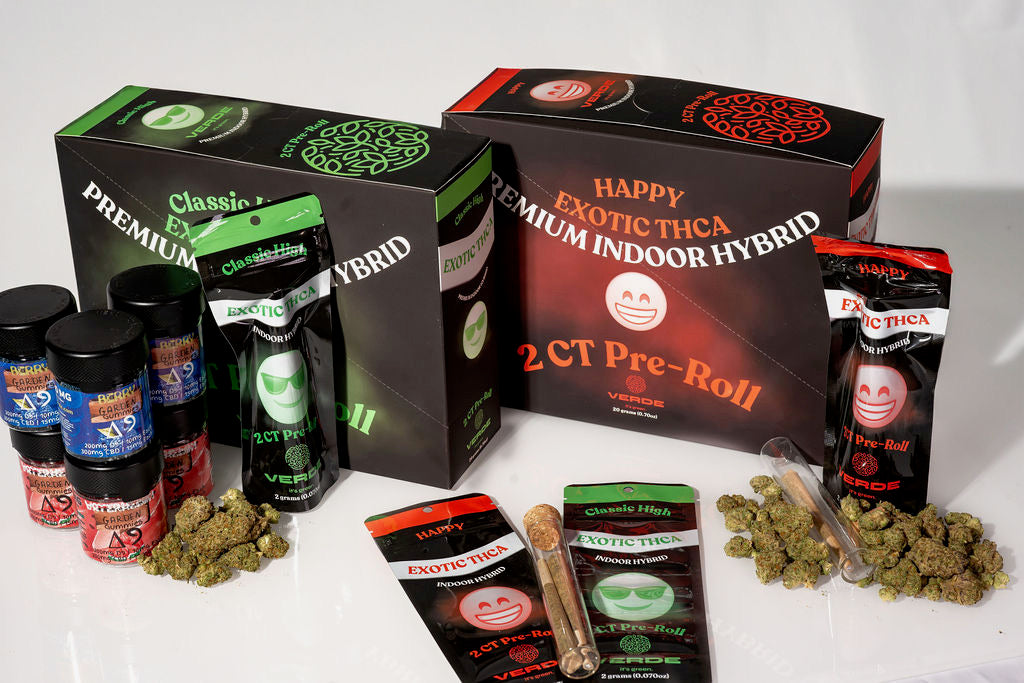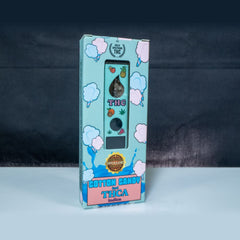
How to Manage Cannabis Tolerance: A Comprehensive Guide
Share
If you feel like cannabis no longer produces the same effects it used to, you’re not alone. Over time, frequent cannabis use can increase your body’s tolerance, making it harder to experience the desired psychoactive effects. This occurs because the body’s endocannabinoid system becomes less responsive to cannabinoids, such as THC, requiring higher doses to achieve the same high.
In this guide, we’ll explore how cannabis tolerance works, the benefits of taking a tolerance break, tips for a successful break, and strategies to prevent tolerance buildup in the future.
Understanding Cannabis Tolerance: Why Can’t You Get High Anymore?
Cannabis tolerance develops as the body becomes accustomed to regular THC exposure. As a result, users may need larger amounts to achieve the same effects. The frequency of consumption plays a key role in tolerance buildup, but individual sensitivity to THC also varies.
For many, this diminished response becomes noticeable after a few months of consistent use. Fortunately, a simple solution exists—taking a tolerance break.
The Importance of Tolerance Breaks
A tolerance break (T-break) is a period during which users refrain from consuming THC to allow their cannabinoid receptors to reset. A break of about two weeks is often sufficient for most users to restore sensitivity to cannabis and experience its effects more fully.
While taking a break can be challenging—especially for those who rely on cannabis for creativity, relaxation, or focus—the long-term benefits often outweigh the short-term discomfort. Regular breaks help maintain the effectiveness of cannabis and reduce the need for higher doses over time.
How to Take a Tolerance Break
The process is straightforward: abstain from all psychoactive cannabis products for the duration of your break. Since THC is the primary psychoactive component, this includes avoiding products containing Delta-8, Delta-9, Delta-10, THCp, and HHC.
You may wonder whether it’s acceptable to use CBD during a tolerance break. Generally, CBD can be used because it lacks psychoactive properties and does not contribute to tolerance. However, it’s advisable to stick to your usual CBD dosage rather than increasing it during the break.
Tips for a Successful Tolerance Break
While abstinence is key, several strategies can help you manage the potential discomfort of a tolerance break:
1. Manage Withdrawal Symptoms:
Some users may experience mild withdrawal symptoms, such as irritability, headaches, or mental fog. Engaging in relaxation techniques like deep breathing, staying hydrated, and maintaining a balanced diet can help ease these symptoms.
2. Stay Active:
Physical activity can help distract from cravings and improve your mood. Exercise also promotes overall well-being, making the break period more manageable.
3. Consider the Length of Your Break:
For regular, long-term cannabis users, a two-week break may not be enough. In such cases, extending the break to three or four weeks may yield better results.
Resuming Cannabis Use After a Tolerance Break
After completing a T-break, your body should be more sensitive to cannabis, allowing you to experience the desired effects with lower doses. However, it’s best to start slow—use small amounts of THC initially to gauge your tolerance.
Additionally, consider experimenting with different consumption methods, such as edibles, vaping, or smoking flower, to discover what works best for you post-break.
Long-Term Strategies to Prevent Tolerance Buildup
Beyond regular tolerance breaks, there are other ways to maintain your sensitivity to cannabis and enjoy a consistent experience:
1. Schedule Regular Tolerance Breaks:
Incorporating planned T-breaks into your routine—every three to six months—can help prevent long-term tolerance buildup. If you’ve noticed a significant decrease in cannabis effects, consider extending your first break beyond two weeks.
2. Vary Your Consumption Methods:
Switching up your consumption method can lead to a more varied experience. For instance, if you primarily smoke flower, trying edibles or vaping may provide different and more pronounced effects.
3. Use High-Quality Cannabis Products:
Low-quality cannabis can produce inconsistent effects, making it harder to gauge your tolerance. High-quality products are rigorously tested for potency and consistency, ensuring a more reliable experience. Investing in premium cannabis products may help you achieve the desired high with smaller doses.
Conclusion: Maintaining a Balanced Cannabis Experience
If you feel like you can no longer get high, it’s likely time for a tolerance break. Taking a break allows your body to reset, helping you regain sensitivity to THC and other cannabinoids. Beyond that, regularly switching up consumption methods and using high-quality products can enhance your overall cannabis experience.
By implementing these strategies, you can maintain a balanced and enjoyable relationship with cannabis over time. Whether you’re a casual user or a frequent consumer, periodic tolerance breaks and mindful consumption can help you get the most out of your cannabis journey.












